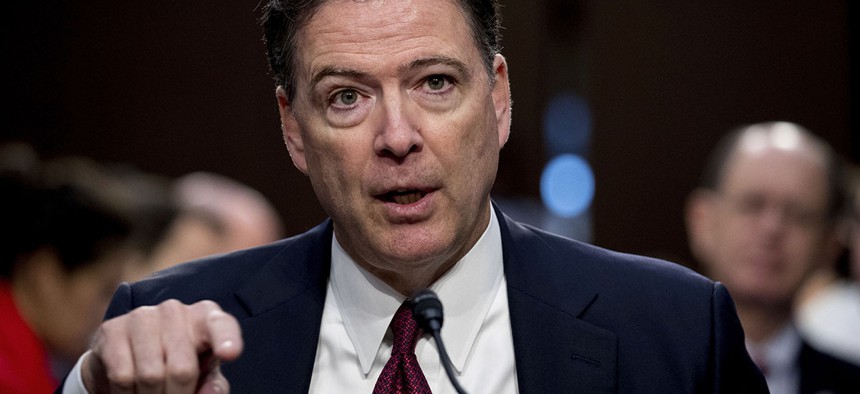Comey Says Russian Hackers Targeted 'Hundreds' of Election-Related Entities, and the Real Number 'Could Be More Than 1,000'

Former FBI director James Comey speaks during a Senate Intelligence Committee hearing on Capitol Hill, Thursday, June 8, 2017. Andrew Harnik/AP
The widely publicized email phishing attack on the Democratic National Committee was just one of those.
At the Senate Intelligence Committee hearing Thursday, committee Chairman Richard Burr asked James Comey to describe the scope of Russian-led “cyber intrusions” that took place during the 2016 election season.
There was “a massive effort to target government and non-governmental—near governmental—agencies like nonprofits,” said Comey, the former FBI director.
“What would be the estimate of how many entities out there the Russians specifically targeted in that time frame?” Burr asked.
“It’s hundreds,” Comey said. “I suppose it could be more than 1,000, but it’s at least hundreds.”
The widely publicized email phishing attack on the Democratic National Committee, through which committee emails were stolen and subsequently published by WikiLeaks, was just one of those. Comey said he has “no doubt” the Russian government was behind that attack.
The FBI had been aware of “Russian-connected cyber intrusion” since the “late summer of 2015,” Comey said. That’s around the time of the first Republican primary debate that year, which was Aug. 7.
Despite the apparent scale of Russia’s hacking operations, Comey does not believe it affected the votes cast in the election.
“When I left as director, I had seen no indication of that whatsoever,” Comey said. Later in his testimony, however, he said it should be made clear Russia did interfere in the election.
“There should be no fuzz on this whatsoever,” he said. “The Russians interfered in our election during the 2016 cycle. They did with purpose. They did it with sophistication. They did it with overwhelming technical efforts. It was an active measures campaign driven from the top of that government.”


